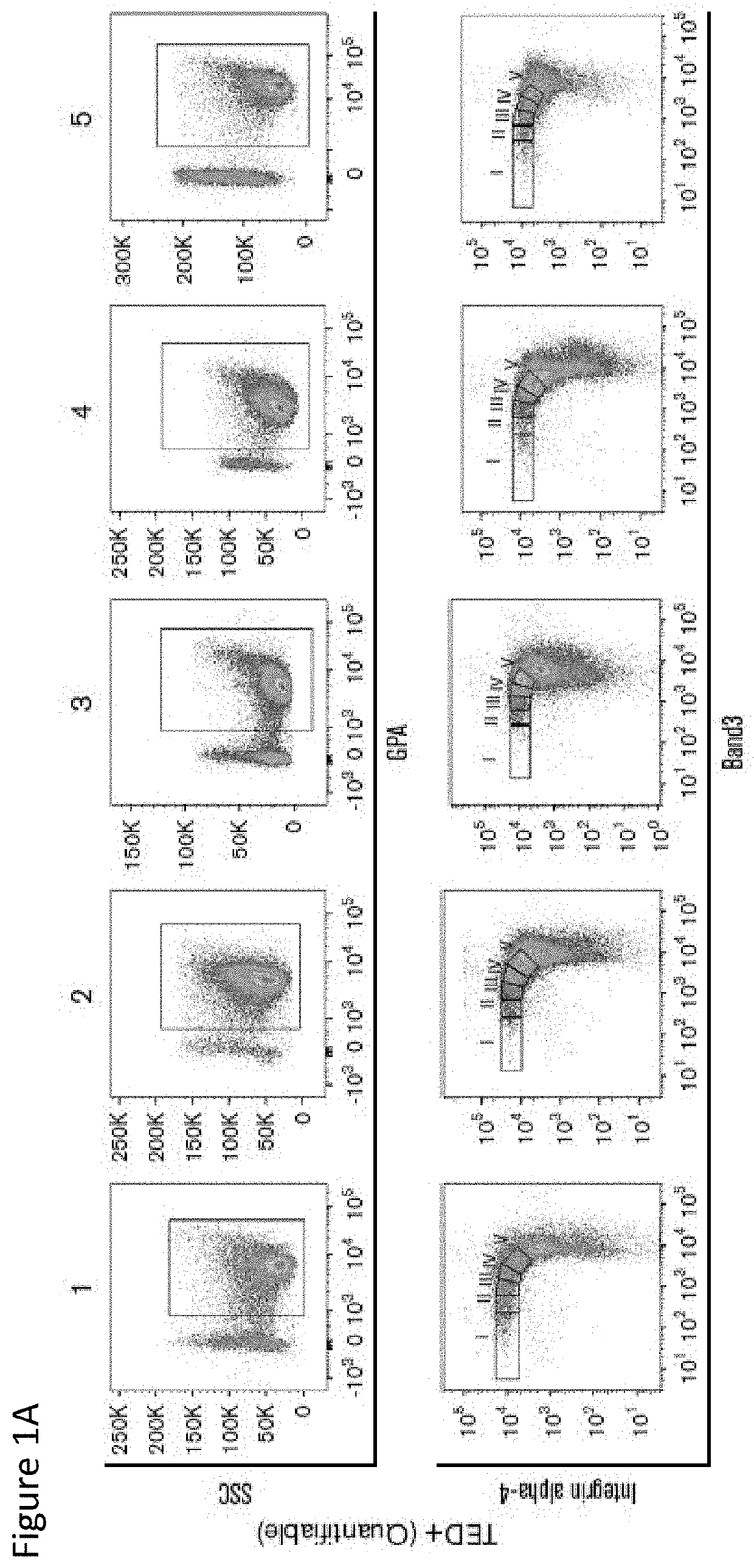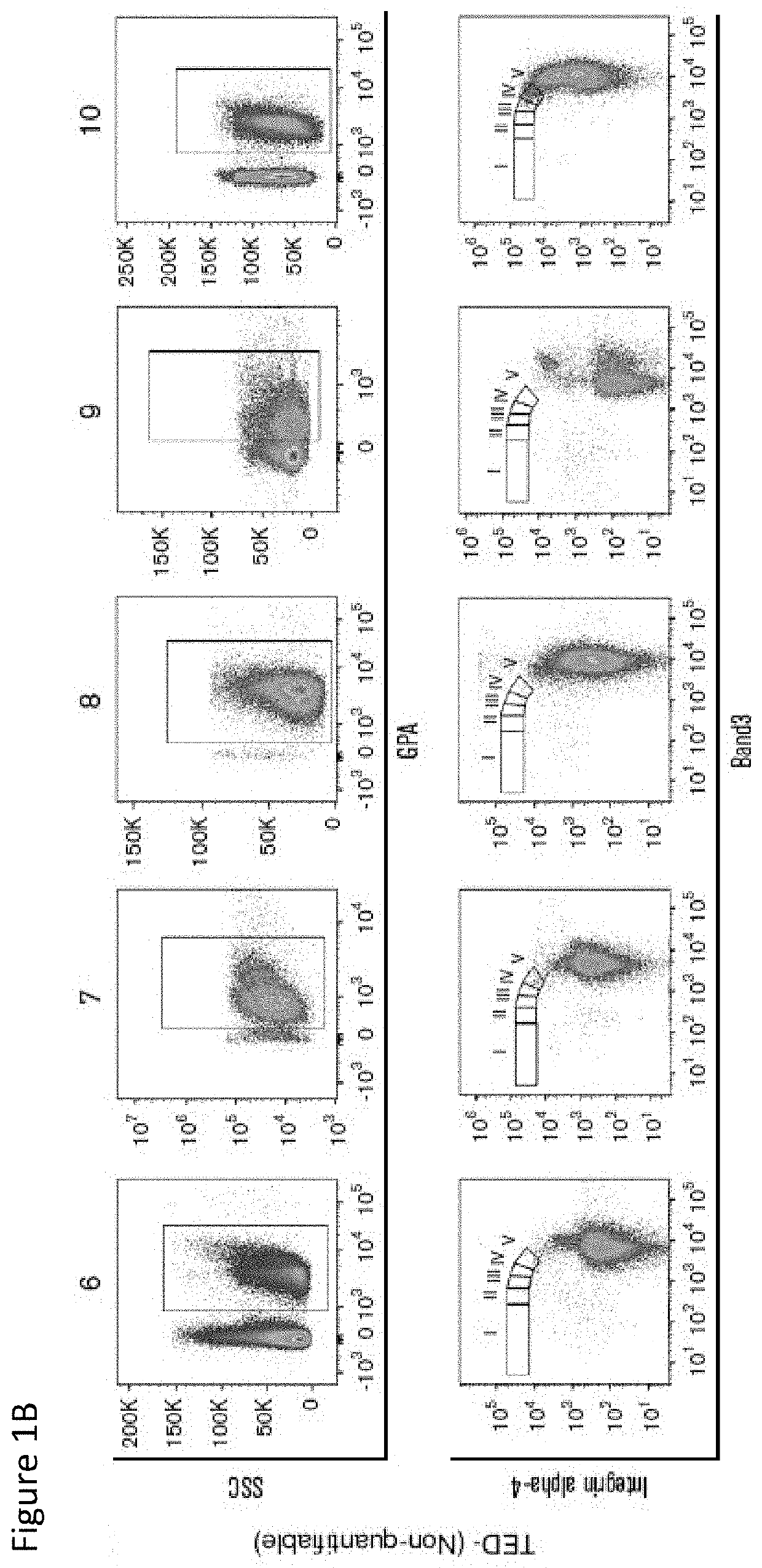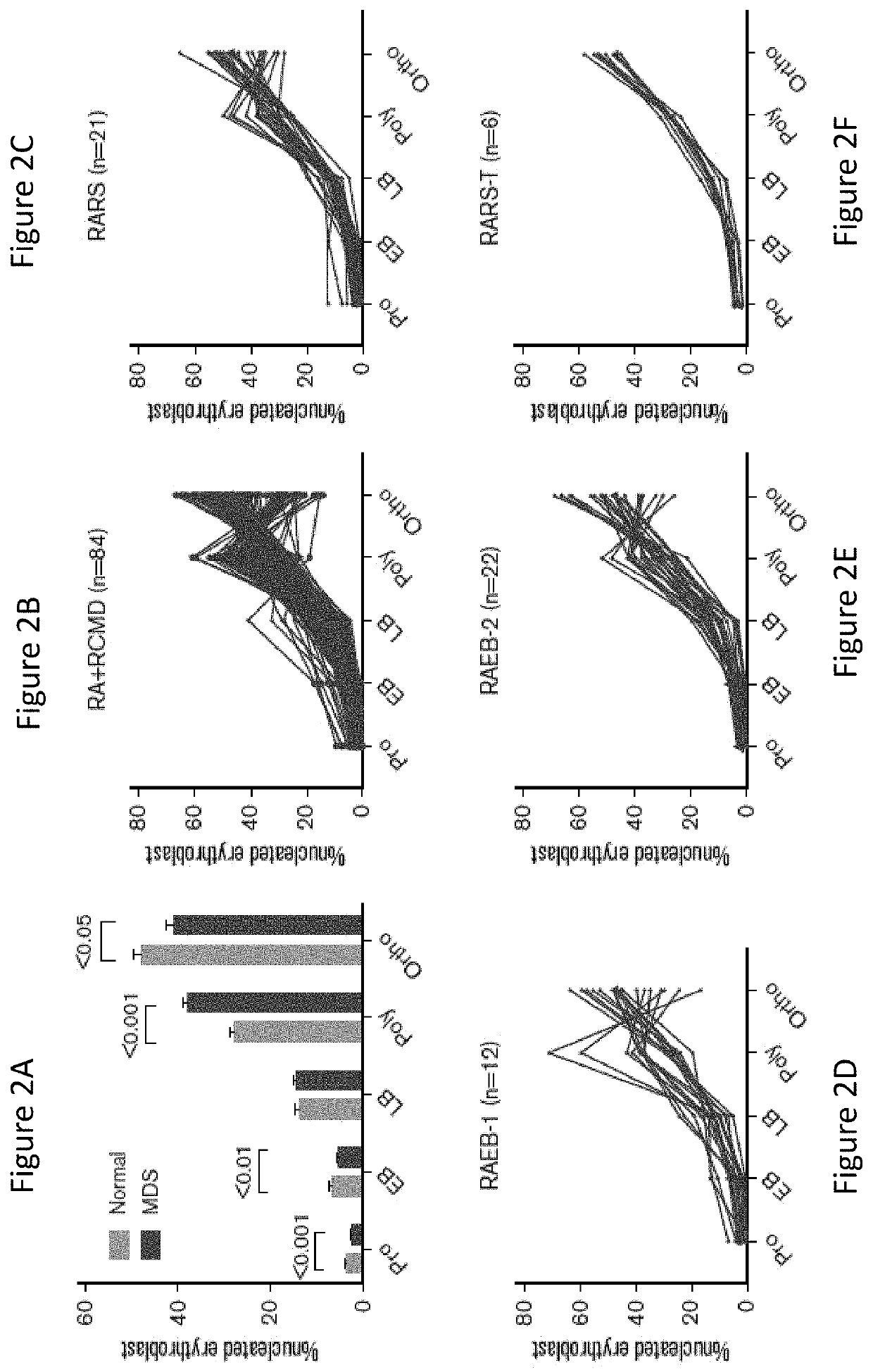Terminal erythroid differentiation as a biomarker for prognosis and treatment, and therapeutic target in myeloid malignancies
a technology of erythroid differentiation and prognosis, applied in the field of terminal erythroid differentiation as a biomarker for prognosis and treatment, and as a therapeutic target in myeloid malignancies, can solve problems such as inferior overall survival
- Summary
- Abstract
- Description
- Claims
- Application Information
AI Technical Summary
Benefits of technology
Problems solved by technology
Method used
Image
Examples
example 1
and Methods for Example 2-9
[0211]Informed consent was obtained from subjects who participated in the study approved by the Institutional Review Board of Columbia University and is in accordance with the Declaration of Helsinki. Samples were obtained from patients seen at New York Presbyterian Hospital / Columbia University Medical Center (NYP / CUMC) and from 16 normal individuals (The New York Presbyterian Cornell Hospital). World Health Organization (WHO) 2008 and IPSS-R were used in the classification of MDS patients. Ring sideroblasts (RS) were detected by Prussian Blue staining and counted by two clinicians. Cytogenetics were analyzed using standard G-banding. Clinical data were obtained via Columbia University Crown EMR and clinic records by researchers blinded to study results.
[0212]The details of age, sex, WHO, IPSS-R, myeloblast, RS, hemoglobin, platelets, absolute neutrophil count, myeloid / erythroid (M:E) ratio, and percentage of cells quantified in various stages of TED in pa...
example 2
f TED Analysis—TED Profiles of MDS Samples
[0219]A total of 221 samples were analyzed for TED, 16 normal controls and 205 BM samples (196 MDS including 9 MDS / myeloproliferative neoplasm [MPN] overlap) were from 113 unique patients with myeloid malignancies. A breakdown by disease type and WHO classification is provided in Table 4. Successively obtained samples during a given period were studied and do not represent patients at any particular point in their disease.
[0220]Number of samples analyzed and distribution of samples
[0221]
TABLE 4in each WHO 2008 disease subtypeAll samplesSamples analyzed for TED205Control samples16Samples with myeloid malignancies221(113 unique patients)Samples with TED (TED)149Adequate samples but No56TED detected (No TED)TED (%)No TED (%)MDSRCUD1(100%)0(0%)RA11(73%)4(27%)RCMD73(70%)32(30%)RARS21(91%)2(9%)RAEB-116(76%)5(24%)RAEB-221(68%)10(32%)MDS / MPNRARS-T6(66%)3(34%)TOTAL14956RAEB, refractory anemia with excess blasts;RCMD, refractory cytopenia with multili...
example 3
f TED Analysis—TED Relationship with RS and WHO Subtypes
[0226]Except RARS-T, the significant differences observed in pro, EB, and poly stages in all MDS samples were retained in other MDS subtypes (FIGS. 2B to 2E). Given a near normal TED in RARS-T subgroup (n=6) (FIG. 2F), all MDS samples with any ring sideroblast were analyzed next (FIGS. 2G and 2H). There were 104 samples in the cohort with accurate quantification of RS ranging from 1-100%, irrespective of WHO classification (Table 1). These samples were divided in four groups: 1-14%, 15-50%, 51-80%, and 81-100%. No significant differences were observed between the four RS groups in pro, EB, LB, and ortho stages but a significant difference was observed in poly stage (P=0.0003) with a strong negative correlation between poly and RS (r=−0.505, P50% RS (FIGS. 2G and 2H). Interestingly while the percent of poly stage erythrobalsts was lower, the percent of ortho stage cells increased with increasing RS. This implied that RS exhibit ...
PUM
| Property | Measurement | Unit |
|---|---|---|
| shape | aaaaa | aaaaa |
| concentration | aaaaa | aaaaa |
| quantitative mass spectrometry | aaaaa | aaaaa |
Abstract
Description
Claims
Application Information
 Login to View More
Login to View More - R&D
- Intellectual Property
- Life Sciences
- Materials
- Tech Scout
- Unparalleled Data Quality
- Higher Quality Content
- 60% Fewer Hallucinations
Browse by: Latest US Patents, China's latest patents, Technical Efficacy Thesaurus, Application Domain, Technology Topic, Popular Technical Reports.
© 2025 PatSnap. All rights reserved.Legal|Privacy policy|Modern Slavery Act Transparency Statement|Sitemap|About US| Contact US: help@patsnap.com



